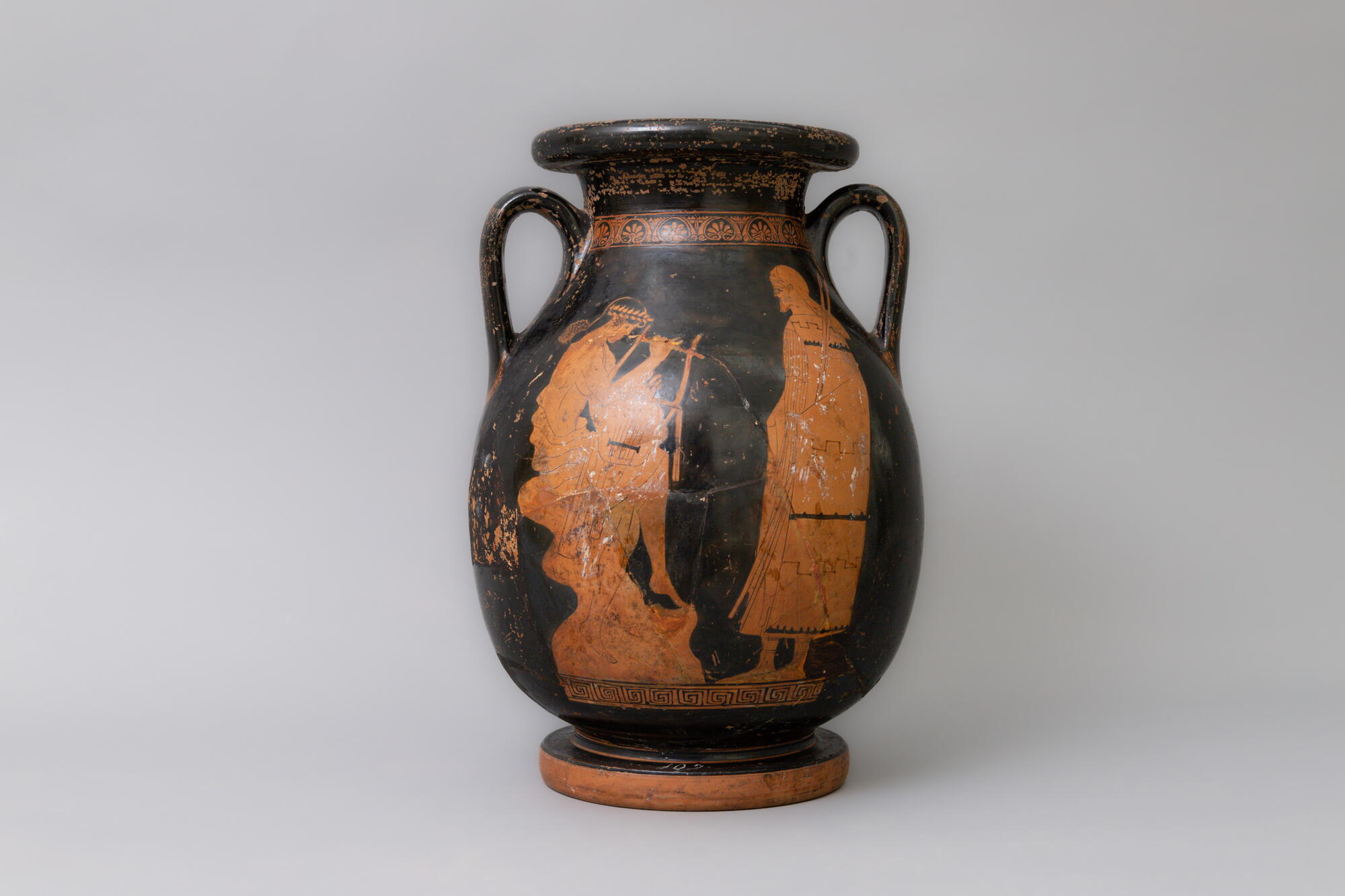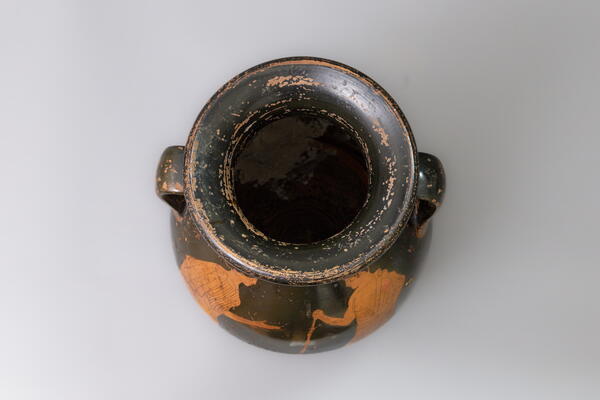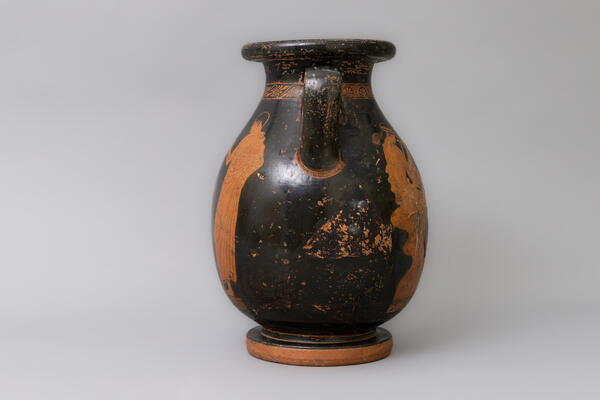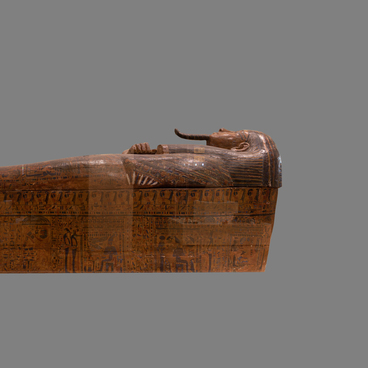A pelike is an ancient painted vessel with a spherical pear-shaped body. It typically has a wide mouth, two vertical handles, and a round base. The pelike has been known since the 6th century BC and is considered a type of table amphora. These vessels were used to store wine and olive oil and were very stable due to their wide base. Later pelike models became more elegant, with their necks getting longer and narrower. Pelikes remained popular in ancient Greece for two or three centuries until they gradually fell into disuse.
The pelike was the preferred vessel used for decoration by vase painters and potters. Its wide surface allowed them to depict elaborate scenes with numerous figures — a trend that gained popularity in the 6th century BC. Artists started to create scenes instead of geometric patterns and separate images of animals.
The red-figure vase painting replaced the black-figure style in a matter of several decades. Previously, the image was painted with a black clay slip. The red-figure painting reversed the technique by using a black background and red figures. Both styles drew inspiration from epic literature, Greek tragedies, and dramas. The masters of red-figure painting often depicted scenes of everyday life, women, architecture, horse teams, the interior of houses and pottery studios. Over 60,000 red-figure vases and their fragments have survived. They were created in Greece and Southern Italy. These vases provide valuable material for studying ancient culture, mythology, history, and way of life.
The red-figure pelike from the Voronezh Art Museum’s collection is decorated with two scenes. On one side, the singer Orpheus sits on a rock, playing his seven-string lyre. He wears a wreath upon his head and has a mantle wrapped around his hips. In front of him is a Thracian holding two spears under his long cloak. The death of Orpheus is one of the most widely used scenes for portraying the legendary musician. The other side of the vase features the images of a young man and woman facing each other. The man leans on a stick, while the woman reaches out to him with her hand. This pelike combines scenes of mythology and everyday life.
The pelike was the preferred vessel used for decoration by vase painters and potters. Its wide surface allowed them to depict elaborate scenes with numerous figures — a trend that gained popularity in the 6th century BC. Artists started to create scenes instead of geometric patterns and separate images of animals.
The red-figure vase painting replaced the black-figure style in a matter of several decades. Previously, the image was painted with a black clay slip. The red-figure painting reversed the technique by using a black background and red figures. Both styles drew inspiration from epic literature, Greek tragedies, and dramas. The masters of red-figure painting often depicted scenes of everyday life, women, architecture, horse teams, the interior of houses and pottery studios. Over 60,000 red-figure vases and their fragments have survived. They were created in Greece and Southern Italy. These vases provide valuable material for studying ancient culture, mythology, history, and way of life.
The red-figure pelike from the Voronezh Art Museum’s collection is decorated with two scenes. On one side, the singer Orpheus sits on a rock, playing his seven-string lyre. He wears a wreath upon his head and has a mantle wrapped around his hips. In front of him is a Thracian holding two spears under his long cloak. The death of Orpheus is one of the most widely used scenes for portraying the legendary musician. The other side of the vase features the images of a young man and woman facing each other. The man leans on a stick, while the woman reaches out to him with her hand. This pelike combines scenes of mythology and everyday life.





